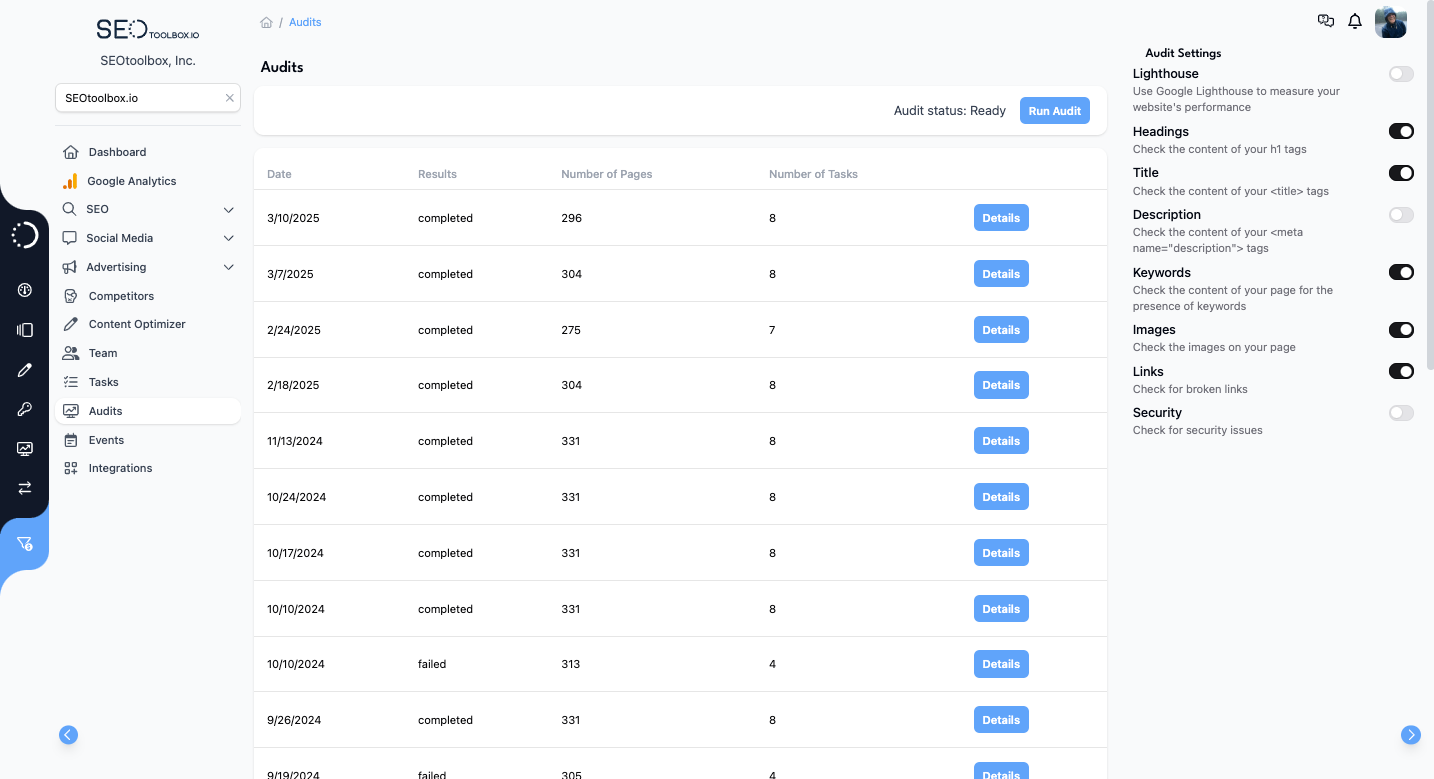Introduction: Why DIY SEO is Easier Than You Think
SEO (Search Engine Optimization) is no longer limited to experts or agencies with technical know-how. Thanks to modern SEO platforms like SEOToolbox.io, anyone can start optimizing their website for search engines and achieve meaningful results. In this guide, you'll learn step-by-step how to take control of your SEO efforts without having to hire outside help.
1. Start with a Comprehensive Website Audit
The first step in doing SEO yourself is understanding your current situation. You need to know what's working, what's broken, and where you can improve.
Use the Website Audit Tool
The Website Audit Tool at SEOToolbox.io automatically scans your entire site. It identifies technical SEO issues, broken links, slow-loading pages, duplicate content, missing metadata, and much more. This gives you a prioritized to-do list so you can fix the most important problems first.
- Get detailed, actionable reports—no technical jargon required.
- Monitor your website regularly to catch new issues as your site evolves.
- Assign tasks to team members or tackle them yourself for better site health.
2. Create Optimized Content with AI
Content is one of the most critical factors in SEO. High-quality, optimized articles help your site rank for relevant keywords and provide value to your audience.
Leverage the AI Content Writer Tool
With the AI Content Writer Tool, you don’t have to be a professional writer to create SEO-rich blog posts or service pages. Just enter your topic or keyword, and the tool generates well-structured, search-optimized content. It automatically incorporates best practices from top-ranking sites so you can compete—even as a beginner.
- Quickly generate blog posts, landing pages, and product descriptions.
- Ensure your articles include keywords, relevant topics, and proper formatting.
- Speed up content production to keep your website growing.
3. Track Your Keyword Rankings and Progress
SEO is not a one-time task—it’s an ongoing process. You need to track your progress to know what's working and where to adjust your efforts.
Utilize the Keyword Tracker Tool
The Keyword Tracker Tool lets you monitor your website’s rankings on Google and other search engines, for every keyword that matters to you. Compare your rankings against competitors, receive daily updates, and get alerts if your site drops in the results.
- Understand which keywords drive the most traffic to your site.
- Keep an eye on the competition to spot new opportunities.
- Set achievable goals and celebrate your improvements.
4. Organize Your SEO Tasks and Collaborate
If you manage your website with a team, clear task management is key. Even as a solo operator, a structured to-do list helps you stay productive.
Team Management Feature
The Team Management feature lets you assign tasks, delegate responsibilities, and monitor progress. This keeps everyone on the same page and ensures nothing falls through the cracks. Solo business owners can use this feature to organize their own workflow and set reminders for ongoing optimization.
5. Connect to Google Search Console for Accurate Data
Search Console is a free Google tool that shows how your website performs in search. When you connect it to SEOToolbox.io, you can automatically pull in key insights like impressions, clicks, and search queries directly into your SEO reports.
Integrating Google Search Console
By linking Google Search Console, you gain access to accurate, up-to-date data on what people search for when they find your site, which pages are most popular, and where you can improve your rankings further—all in one dashboard.
Conclusion: Take Charge of Your Website’s SEO
Doing SEO on your own is completely possible with the right tools and a bit of determination. SEOToolbox.io helps you through every step—from auditing your website and creating powerful content, to tracking rankings and managing tasks. Don’t let lack of technical experience hold you back from improving your site’s visibility.
Ready to get started? Sign up for SEOToolbox.io today and take the first step to driving more organic traffic—no consultants or agencies required!
